-
 Bitcoin
Bitcoin $101,730.5414
-2.70% -
 Ethereum
Ethereum $2,454.6799
-2.55% -
 Tether USDt
Tether USDt $1.0000
-0.02% -
 XRP
XRP $2.4821
4.61% -
 BNB
BNB $657.8495
0.61% -
 Solana
Solana $170.2739
-1.66% -
 USDC
USDC $0.9998
-0.01% -
 Dogecoin
Dogecoin $0.2259
-2.53% -
 Cardano
Cardano $0.8000
-1.49% -
 TRON
TRON $0.2720
2.89% -
 Sui
Sui $3.8978
-2.73% -
 Chainlink
Chainlink $16.4135
-3.46% -
 Avalanche
Avalanche $24.3873
-1.68% -
 Stellar
Stellar $0.3078
0.12% -
 Shiba Inu
Shiba Inu $0.0...01538
-3.80% -
 Hedera
Hedera $0.2113
2.90% -
 Toncoin
Toncoin $3.3163
-1.73% -
 Bitcoin Cash
Bitcoin Cash $406.7742
-0.94% -
 Hyperliquid
Hyperliquid $24.0023
-2.39% -
 Polkadot
Polkadot $5.0218
-2.11% -
 UNUS SED LEO
UNUS SED LEO $8.4943
1.49% -
 Pi
Pi $1.1016
1.30% -
 Litecoin
Litecoin $100.8299
0.36% -
 Monero
Monero $335.7882
-0.16% -
 Pepe
Pepe $0.0...01329
-2.77% -
 Bitget Token
Bitget Token $4.7432
-2.62% -
 Dai
Dai $1.0000
0.01% -
 Ethena USDe
Ethena USDe $1.0009
0.05% -
 Uniswap
Uniswap $6.8219
-1.56% -
 Bittensor
Bittensor $452.7810
-0.39%
What is the difference between USDT and USDC?
USDT and USDC, while both dollar-pegged stablecoins, differ significantly in issuer transparency (Tether vs. Circle), reserve composition verification, and regulatory scrutiny, impacting investor confidence and stability.
Mar 06, 2025 at 01:24 pm
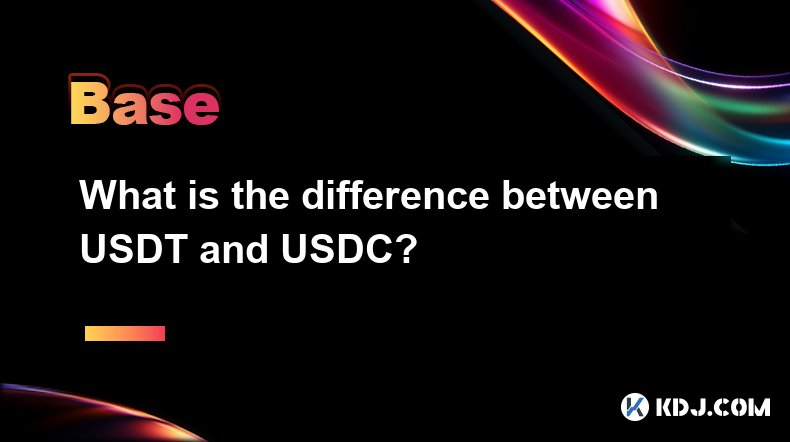
Key Points:
- Issuers: USDT is issued by Tether, while USDC is issued by Circle. This difference in issuer leads to variations in transparency and regulatory scrutiny.
- Reserves: Both claim to be backed by US dollar reserves, but the composition and verification methods differ significantly, impacting trust and stability.
- Adoption and Market Cap: While both are leading stablecoins, their market capitalization and usage across exchanges and decentralized applications vary, influencing liquidity and transaction fees.
- Transparency and Audits: The level of transparency regarding reserves and the frequency of audits differ between the two, impacting investor confidence.
- Smart Contract Differences: While both operate on various blockchains, the underlying smart contracts and functionalities may have subtle variations.
What is the difference between USDT and USDC?
USDT (Tether) and USDC (USD Coin) are both prominent stablecoins, pegged to the US dollar, aiming to maintain a 1:1 ratio. However, significant differences exist in their operational structures, regulatory oversight, and overall trustworthiness.
Issuers and Governance:
USDT is issued by Tether Limited, a company that has faced considerable scrutiny regarding the composition of its reserves. USDC, on the other hand, is a joint venture between Circle and Coinbase, offering a more established and transparent governance structure. This difference in governance significantly influences the level of public trust.
Reserve Composition and Audits:
Both USDT and USDC claim to maintain reserves equal to or exceeding their circulating supply. However, the transparency surrounding these reserves differs drastically. Tether has faced criticism for its lack of complete and regularly audited transparency regarding its reserve assets. USDC, while not completely immune to criticism, undergoes more frequent and independent audits, offering greater assurance to users. The specifics of what constitutes their reserves (cash, commercial paper, etc.) also vary.
Adoption and Market Capitalization:
While both are widely adopted, USDT generally boasts a larger market capitalization than USDC. This difference in market size can affect liquidity, trading fees, and the availability of trading pairs on various exchanges. A larger market cap usually means more readily available trading options. However, a smaller market cap doesn't necessarily indicate a less secure or stable coin.
Transparency and Regulatory Scrutiny:
The level of transparency surrounding the operational aspects of both USDT and USDC varies significantly. USDC generally publishes more frequent and detailed reports about its reserves and undergoes more stringent audits, contributing to higher levels of investor confidence. USDT's history of regulatory challenges and controversies has led to concerns among investors. The regulatory landscape for stablecoins is constantly evolving, and both are subject to ongoing scrutiny.
Smart Contracts and Functionality:
Both USDT and USDC exist on various blockchains, including Ethereum, Tron, and Solana. While their core functionality remains similar – maintaining a 1:1 peg with the US dollar – the underlying smart contracts governing their operations might have subtle differences in design and functionality. These subtle differences can impact transaction speeds, fees, and integration with decentralized applications (dApps). Users should carefully research the specific smart contract implementation on each blockchain before using either stablecoin.
How are USDT and USDC pegged to the US dollar?
Both stablecoins aim to maintain a 1:1 peg with the US dollar through various mechanisms. They claim to hold reserves of US dollar-denominated assets, theoretically allowing users to redeem their stablecoins for an equivalent amount in USD. However, the specifics of how this redemption process works, and the level of transparency surrounding the reserves, are key differences between the two.
Step-by-Step Guide: Understanding the Key Differences
Here's a breakdown of the key differences in a step-by-step format:
- Step 1: Examine the Issuer: Consider the reputation and transparency of the issuer. Tether (USDT) has a more controversial history compared to Circle (USDC).
- Step 2: Investigate the Reserve Composition: Look into the types of assets backing the stablecoin. Independent audits are crucial for assessing the trustworthiness of the reserves.
- Step 3: Evaluate Market Capitalization and Liquidity: A larger market cap usually translates to better liquidity and lower transaction fees, but this isn't a guarantee of stability.
- Step 4: Assess Regulatory Compliance: Check for regulatory scrutiny and compliance history. Understanding the legal landscape surrounding each stablecoin is vital.
- Step 5: Analyze Smart Contract Details: Compare the functionalities and security of the smart contracts on different blockchains.
Common Questions and Answers:
Q: Which stablecoin is safer, USDT or USDC?
A: There's no definitive answer. USDC generally enjoys higher trust due to greater transparency and more frequent audits, but neither is entirely risk-free. The inherent risks of stablecoins, including the potential for de-pegging, apply to both.
Q: Can I easily convert USDT to USDC and vice versa?
A: Yes, most major cryptocurrency exchanges offer trading pairs for USDT/USDC, allowing for seamless conversion. However, transaction fees and slippage should be considered.
Q: Are USDT and USDC regulated?
A: The regulatory landscape for stablecoins is evolving. Both USDT and USDC face varying levels of regulatory scrutiny depending on jurisdiction. Regulations are not uniform globally.
Q: What happens if a stablecoin de-pegs from the US dollar?
A: De-pegging means the stablecoin's value deviates significantly from its intended 1:1 peg with the US dollar. This can lead to significant financial losses for holders. The risk of de-pegging is present for both USDT and USDC, although the likelihood is a matter of ongoing debate and assessment.
Q: Are there any alternatives to USDT and USDC?
A: Yes, several other stablecoins exist, each with its own set of characteristics, risks, and advantages. Examples include DAI, BUSD, and others. Researching the specifics of each is crucial before investing.
Disclaimer:info@kdj.com
The information provided is not trading advice. kdj.com does not assume any responsibility for any investments made based on the information provided in this article. Cryptocurrencies are highly volatile and it is highly recommended that you invest with caution after thorough research!
If you believe that the content used on this website infringes your copyright, please contact us immediately (info@kdj.com) and we will delete it promptly.
- Donald Trump says US and China have agreed to a 'total reset' in trade that will cut tariffs and ease tensions
- 2025-05-13 03:25:13
- Strategy Expands Its Bitcoin Position With the Purchase of 13390 BTC for Approximately 1.34 Billion
- 2025-05-13 03:25:13
- AI-Driven Digital Currency Generation Hub. Distinguishing Between Cryptocurrency Allocation and Remote Mining
- 2025-05-13 03:20:12
- It's hard to measure the outsized influence President Donald Trump has had on crypto
- 2025-05-13 03:20:12
- SUI recently broke out of a bullish pennant formation. This is a technical chart pattern that often appears during strong uptrends and usually signals the continuation of upward movement.
- 2025-05-13 03:15:14
- Ethereum Whales Move 150k Coins as Price Hits New Highs
- 2025-05-13 03:15:14
Related knowledge

Web3 Social Jargon: Emerging Terminology for Decentralized Social Media
May 11,2025 at 10:28pm
In the rapidly evolving landscape of Web3 and decentralized social media, new jargon and terminology are constantly emerging. Understanding these terms is crucial for anyone looking to navigate and participate in this burgeoning field. This article aims to provide a comprehensive overview of the key terminology associated with Web3 social media, helping...

Crypto Payment Terminology: Vocabulary from Lightning Network to Merchant Acceptance
May 11,2025 at 06:28pm
In the dynamic world of cryptocurrency, understanding the terminology related to crypto payments is crucial for both users and merchants. From the Lightning Network to merchant acceptance, this article delves into key terms and concepts that are essential for navigating the crypto payment landscape. Whether you're a seasoned crypto enthusiast or a newco...
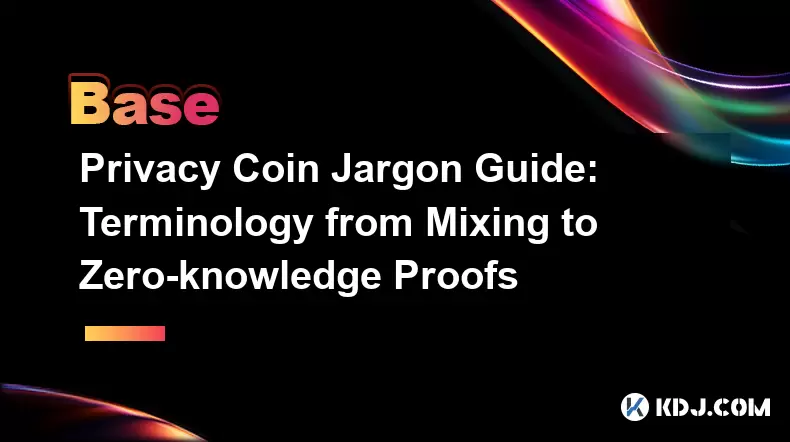
Privacy Coin Jargon Guide: Terminology from Mixing to Zero-knowledge Proofs
May 11,2025 at 06:49am
In the world of cryptocurrencies, privacy coins have emerged as a significant subset, designed to enhance user anonymity and transaction confidentiality. To navigate this specialized field, understanding the specific terminology used is essential. This guide aims to demystify the jargon surrounding privacy coins, from mixing to zero-knowledge proofs, pr...
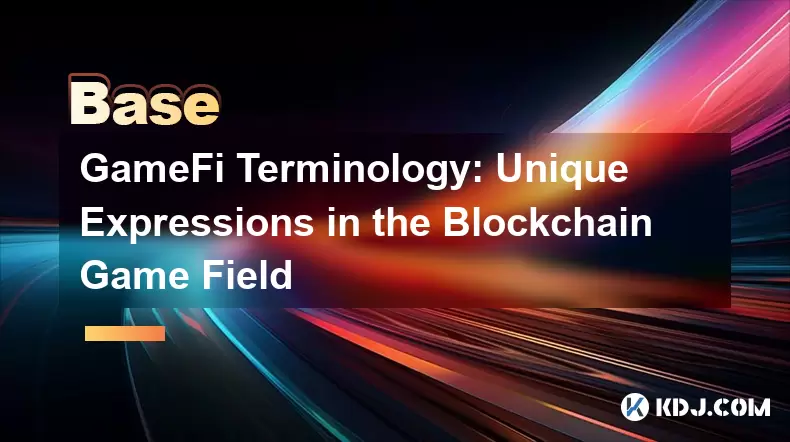
GameFi Terminology: Unique Expressions in the Blockchain Game Field
May 10,2025 at 08:35am
The world of GameFi, a portmanteau of 'gaming' and 'finance,' has introduced a plethora of unique terminologies that are essential for understanding and participating in blockchain-based gaming ecosystems. These terms often blend traditional gaming concepts with blockchain and cryptocurrency elements, creating a specialized vocabulary that is crucial fo...
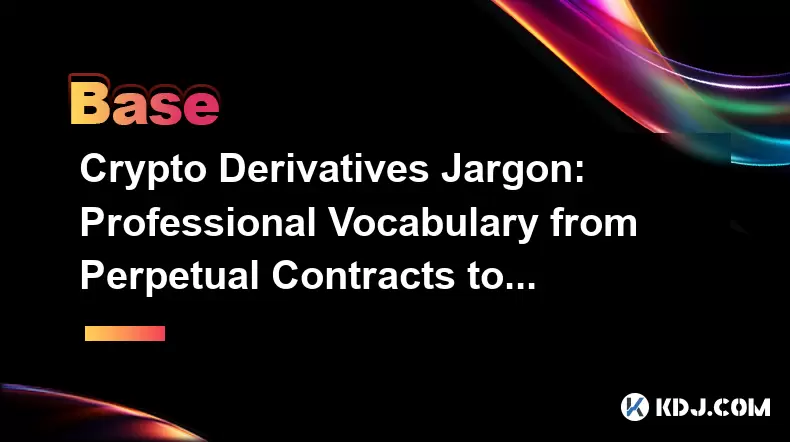
Crypto Derivatives Jargon: Professional Vocabulary from Perpetual Contracts to Options
May 09,2025 at 07:42pm
In the bustling world of cryptocurrency, derivatives have become a crucial tool for traders looking to leverage their positions, hedge against volatility, and speculate on price movements without owning the underlying assets. To navigate this complex market, it's essential to understand the professional vocabulary associated with crypto derivatives, fro...
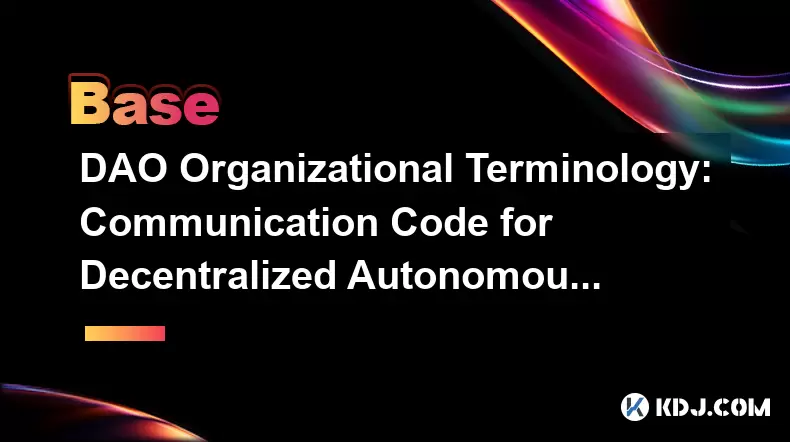
DAO Organizational Terminology: Communication Code for Decentralized Autonomous Communities
May 11,2025 at 06:42pm
In the evolving landscape of decentralized autonomous organizations (DAOs), effective communication is paramount for their success and operational efficiency. DAOs are essentially entities on the blockchain that operate without centralized control, relying instead on smart contracts and community consensus to make decisions and execute actions. As such,...

Web3 Social Jargon: Emerging Terminology for Decentralized Social Media
May 11,2025 at 10:28pm
In the rapidly evolving landscape of Web3 and decentralized social media, new jargon and terminology are constantly emerging. Understanding these terms is crucial for anyone looking to navigate and participate in this burgeoning field. This article aims to provide a comprehensive overview of the key terminology associated with Web3 social media, helping...

Crypto Payment Terminology: Vocabulary from Lightning Network to Merchant Acceptance
May 11,2025 at 06:28pm
In the dynamic world of cryptocurrency, understanding the terminology related to crypto payments is crucial for both users and merchants. From the Lightning Network to merchant acceptance, this article delves into key terms and concepts that are essential for navigating the crypto payment landscape. Whether you're a seasoned crypto enthusiast or a newco...

Privacy Coin Jargon Guide: Terminology from Mixing to Zero-knowledge Proofs
May 11,2025 at 06:49am
In the world of cryptocurrencies, privacy coins have emerged as a significant subset, designed to enhance user anonymity and transaction confidentiality. To navigate this specialized field, understanding the specific terminology used is essential. This guide aims to demystify the jargon surrounding privacy coins, from mixing to zero-knowledge proofs, pr...

GameFi Terminology: Unique Expressions in the Blockchain Game Field
May 10,2025 at 08:35am
The world of GameFi, a portmanteau of 'gaming' and 'finance,' has introduced a plethora of unique terminologies that are essential for understanding and participating in blockchain-based gaming ecosystems. These terms often blend traditional gaming concepts with blockchain and cryptocurrency elements, creating a specialized vocabulary that is crucial fo...

Crypto Derivatives Jargon: Professional Vocabulary from Perpetual Contracts to Options
May 09,2025 at 07:42pm
In the bustling world of cryptocurrency, derivatives have become a crucial tool for traders looking to leverage their positions, hedge against volatility, and speculate on price movements without owning the underlying assets. To navigate this complex market, it's essential to understand the professional vocabulary associated with crypto derivatives, fro...

DAO Organizational Terminology: Communication Code for Decentralized Autonomous Communities
May 11,2025 at 06:42pm
In the evolving landscape of decentralized autonomous organizations (DAOs), effective communication is paramount for their success and operational efficiency. DAOs are essentially entities on the blockchain that operate without centralized control, relying instead on smart contracts and community consensus to make decisions and execute actions. As such,...
See all articles






















































































